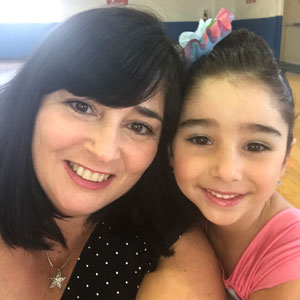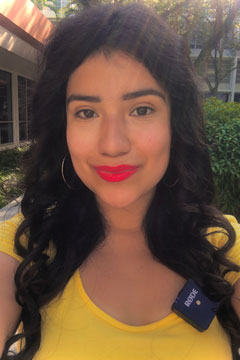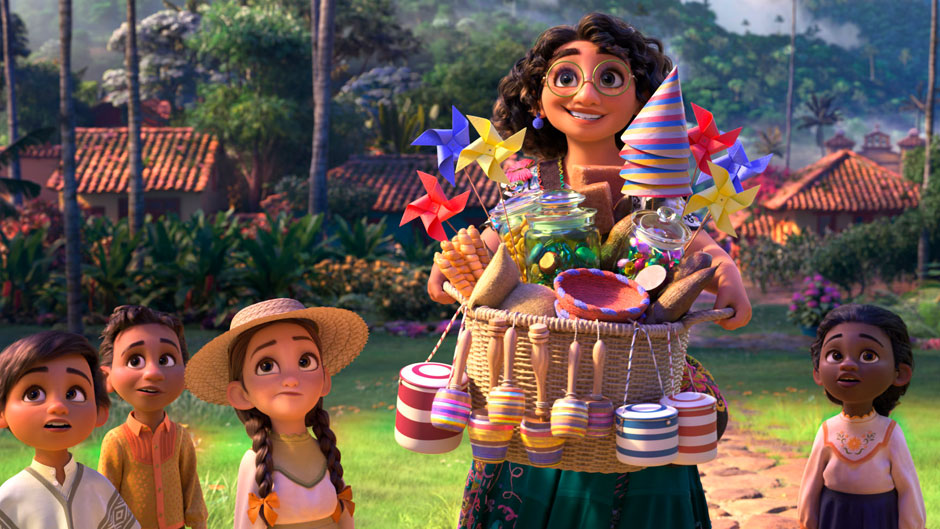Eight-year-old Emma Gomez has watched the Walt Disney animated movie “Encanto” 13 times. She loves to sing and dance to the movie’s catchy song “We Don’t Talk About Bruno,” and knows the rest of the musical score by heart.
“She even asks me to play the film as she is falling asleep,” said her mother, Marcia Gomez, a lecturer in the University of Miami School of Communication.

Emma is not alone. The movie has received three Oscar nominations and its catchy song, “We Don’t Talk About Bruno,” has surpassed Frozen’s “Let It Go” by reaching the fourth spot in the Hot 100 song chart.
But “Encanto” has also received massive praise for the accurate way it portrays the Hispanic Madrigal family and the depiction of its many characters to fully represent the complexity of the Hispanic culture.
The movie tells the story of the Madrigal family. They live in Colombia and their children each inherit a magical gift—all except Mirabel, one of the youngest grandchildren.
The animated film has sparked a wave of social media posts, featuring photos and videos of young kids smiling next to the main characters in the film because they see themselves in them.
View this post on Instagram
Hannary Araújo, mother to 2-year-old Manu Araújo Marques, shared a video on BuzzFeed of her daughter watching “Encanto” for the first time. In the video, Manu looks at the TV and sees the main character, Mirabel, and recognized her right away. “It’s me, mommy!” the little girl exclaimed, according to BuzzFeed. Manu looks just like Mirabel.
Most classic Disney animated movies feature a white princess who eventually finds her Prince Charming, according to Gomez. The straying from the traditional depiction of a princess who needs to be rescued is also a message that is important to highlight for children, but especially girls, Gomez pointed out.
From “The Princess and the Frog” to “Mulan” and “Moana,” Disney princesses have been slowly showing up in different races and sizes, and with stronger characteristics. But “Encanto” not only features Disney’s first all-Latino cast but a main character who wears glasses. In addition, the film features several of Mirabel’s relatives who are mixed-race.
“I feel like Disney did a good job of being authentic and depicting the different versions of what Hispanics look like,” said Gomez. “We come from varied races and some of us have straight hair and others curly hair and different features.”

Camilo Rodriguez, a lecturer at the Frost School of Music, was born in Barranquilla, Colombia. He watched “Encanto” with his 10-year-old nephew and enjoyed the film.
“It is kind of unique because Colombians do not always get the best representation in films and the big films about Colombians are usually about [drug lord] Pablo Escobar or drugs and a lot of Colombians are reluctant to see them,” he said.
But in “Encanto,” Rodriguez found the music of the accordion and cumbia (musical rhythm and dance) of his childhood and at times could hear the musical beats of the Barranquilla carnival. He had not heard those sounds in a film before, he said. The animated film’s music and lyrics were composed by Germaine Franco and Lin-Manuel Miranda. Another song from the movie, “Dos Oruguitas,” received an Oscar nomination for best original song.
Rodriguez was also drawn in by the word “Encanto,” which translates as enchanted, but has overtones of magic realism, a literary genre where magic or supernatural elements become part of everyday life.
“I loved how the house in ‘Encanto’ is alive,” he said.

Vanessa Bonilla, a junior who is president of PorColombia, a 230-person-strong student organization that holds events to celebrate its ethnic background, loved the film.
“I was very scared of going to see ‘Encanto’ because I am a big Disney fan and many of my Colombian friends felt the same,” she said. “If they would have misrepresented Colombian culture or used stereotypes, my love for Disney would have changed. But thankfully, they represented our culture beautifully.”
She particularly enjoyed how the film captured the essence of Colombian family life, where the extended family is important.
“Mirabel is very connected with her cousins and her tias (aunts) and her uncles in a way that you don’t see as much in the U.S.,” she said. She also thought that the authentic way the movie portrayed the Colombian food—buñuelos, arepas, and ajiaco, gave the story an authentic flavor.
Most of the movie’s characters have a gift that makes them special. Luisa, the middle Madrigal sister, is described as the “rock” of the family.
Gomez identifies with Luisa. “She carries the weight of the family on her shoulders, and she is the one who removes obstacles,” said Gomez. “I feel I fulfill that role in my family.”
Gomez said that she believes the film is making an impact with a large audience because it is about universal issues, such as family and accepting oneself.
“It has hit a nerve with its overall message that we need to accept ourselves as we are and accept that we all have gifts even if we don’t feel like we have them,” she said. “The movie is about hope and family and accepting ourselves and all our unique gifts.”

